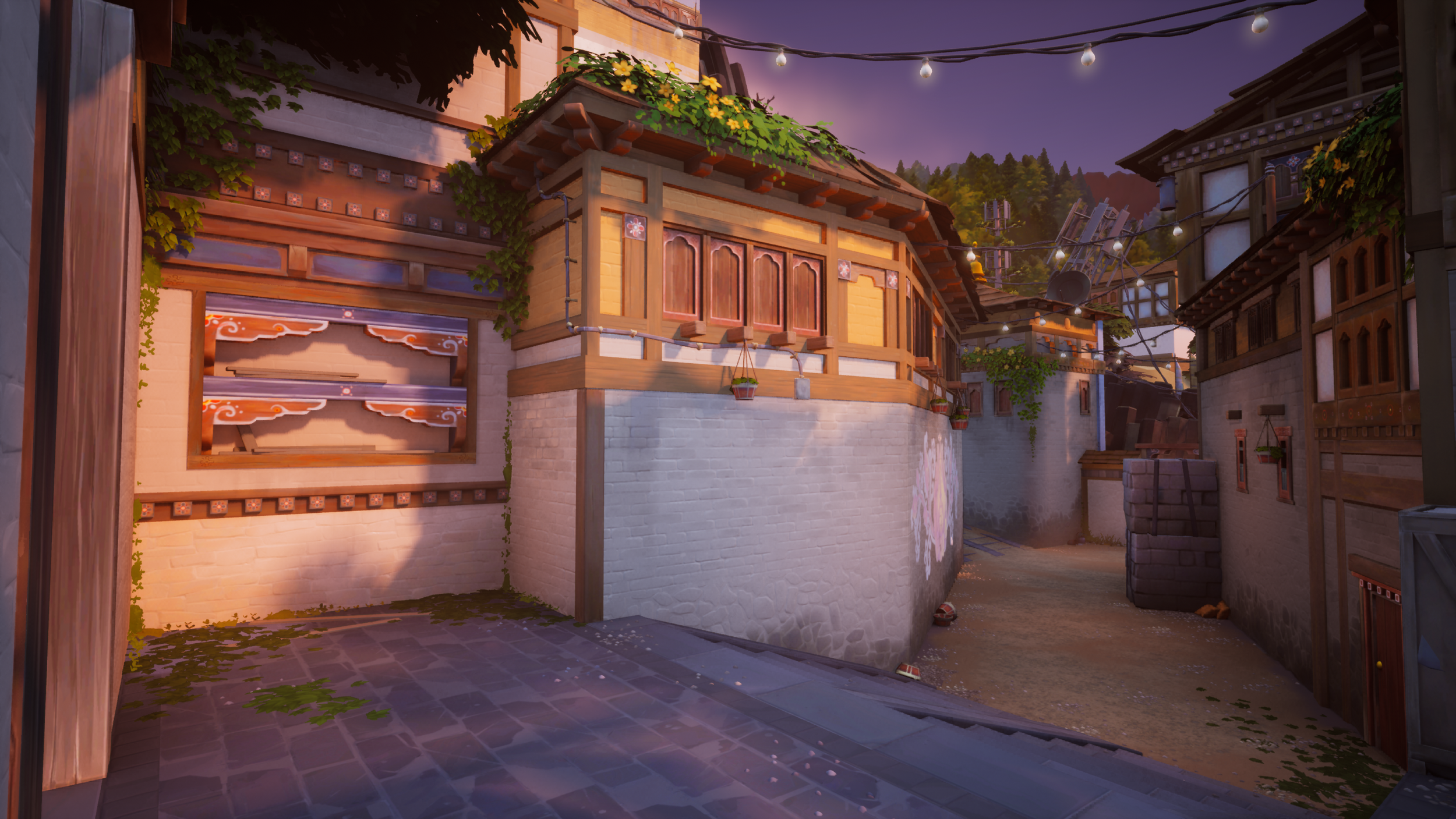
Can Competition be Beautiful?
An obsessively detailed study on lighting for esports
is a competitive 5v5 character-based tactical shooter based in the near future, on an Earth that relies on an unstable new element called ‘Radianite’ to produce energy and fuel new technologies. With Valorant being Riot Games’ latest IP baby, there is an enormous amount of worldbuilding and narratives at play, with every map clueing in players on the rich lore of the universe through carefully curated environments - There is so much that can be said through environmental storytelling with architecture, props and setting.
Though Valorant is first and foremost a competitive esports game; the developers had to find a balance between story-telling and competitive standards. This means that story elements have to be integrated well into the game without hindering an important competitive factor such as visibility. We can see this in play when the environment becomes an integral part of the gameplay, such as tactical callouts (Lamps on Bind, Graffiti on Haven, etc…).
VALORANT
No lighting
Look at the difference!!
Before I could begin relighting, I must be able to give thought to the following questions:
-
Bright areas and well-lit corners. Not exactly what first comes to mind when thinking of night. Is it possible to even have a night-time map and retain high visibility?
-
We have to keep in mind how different lifestyles and habits across the globe can influence our use of lighting/types of lights used. How different technology can influence lighting.
-
Digital lighting makes it easy to spam as many lights as you want to get the absolute perfect lighting setup. However, Valorant is built to be able to run on low-end hardware and prioritizes high performance first.
I will be taking measures to ensure the environment performs smoothly at acceptable framerates for competitive gaming.
Fully lit
All of this is great, however none of the worldbuilding would be as effective without good lighting. Valorant’s philosophy with lighting calls for bright spaces in every single corner, even in shadowed areas to retain high visibility - Indoor spaces are just as bright as outdoor spaces. You might think that by this logic, the world of Valorant must be pretty flat looking if everything is at a similar luminance.
Given the game’s cartoonish aesthetic, artists are able to use vibrant colours to create strong contrasts serving two purposes:
The primary purpose is that by creating strong colour contrasts, map readability becomes easier since details can be processed by the eye with easily digestible chunks.
The second purpose is to breathe life into its environments, since it cannot fully utilize strong contrasted lighting to build upon its storytelling.
Keep these two points in mind, as I will be further exploring them in this study later.
So… According to Valorant’s lighting philosophy, environments at night should not be possible. This is a challenge that I wanted to take on since surely the bad guys and good guys of this universe would not only operate on a 9-5 basis, right?
Jokes aside, I love the idea of having the same playable environment under different lighting conditions as it could completely change the mood and keep the game feeling fresh (Especially for Valorant given how few maps the game has).
Some disclaimers before we begin…
During my research, I found that many players reported concerns with various time-of-day maps including:
Agent abilities such as Omen’s entire colour palette being dark were designed with bright environments in mind.
Players with colour blindness may have more difficulty playing on the same map if the colours/lighting are not consistent.
With this in mind, I am approaching this challenge mainly with the questions presented above, as this is just a fan project and learning experience. I will be using Unreal Engine 5.2 for this project. All mapping and environment credits belong to Riot Games.
Click on the images below to get started!

